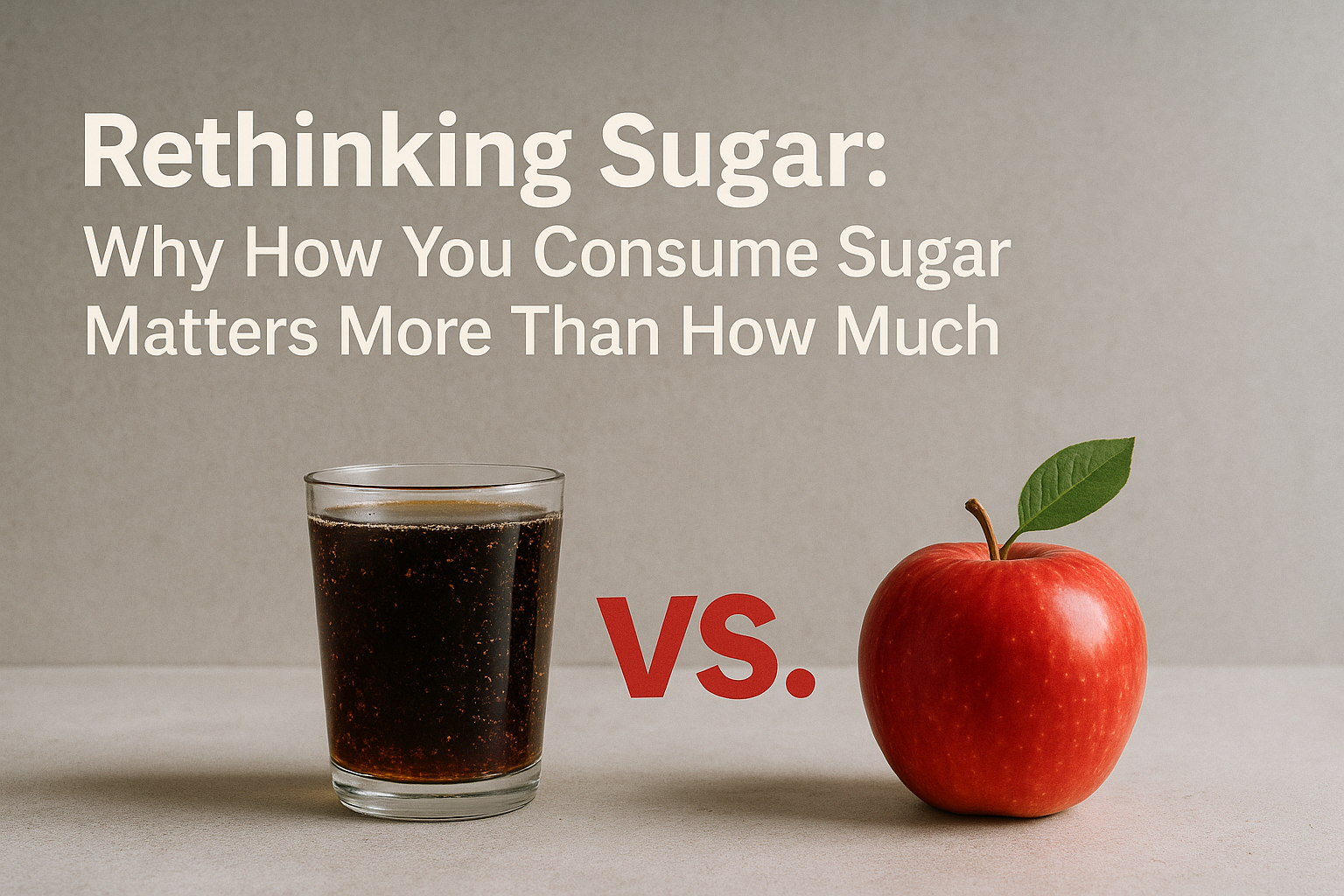A new global study from Brigham Young University (BYU) is turning our understanding of sugar and diabetes upside down. While many health guidelines warn against eating too much sugar, this research suggests that where the sugar comes from—solid food or drinks—may be even more important than how much you consume.
🍬 Not All Sugars Are Equal
Led by BYU nutrition professor Dr. Karen Della Corte, in collaboration with researchers from Germany, the study analyzed data from over 500,000 people across five continents. The goal? To figure out whether different sources of sugar affect the risk of developing type 2 diabetes differently.
Using a sophisticated method called dose-response meta-analysis, the team looked at how diabetes risk changed based on sugar intake from various foods and drinks.
🥤 Sugary Drinks Raise Diabetes Risk Sharply
The most striking finding: sugar consumed in liquid form—especially in sugary drinks like soda—was strongly linked to a higher risk of type 2 diabetes.
For each daily serving of sugary beverages (about 12 oz or 350 ml), the risk of developing diabetes increased by 25%. 100% fruit juice, often perceived as healthy, also increased the risk, but only by about 5% per serving. In contrast, whole fruits, which also contain sugar, were actually associated with a lower risk of diabetes.
🍎 Why Liquid Sugar Is Worse
So why is drinking sugar worse than eating it?
Drinks are rapidly absorbed and lack fiber, leading to quick spikes in blood sugar and insulin. This sudden metabolic impact can stress the liver, contribute to insulin resistance, and eventually increase diabetes risk. On the other hand, whole fruits contain fiber, water, and beneficial plant compounds, which slow down sugar absorption and protect against blood sugar spikes.
In other words, it’s not just the sugar—it’s the delivery system.
📊 What Makes This Study Unique
This is the first study of its kind to globally quantify how different sugar sources impact diabetes risk using dose-response modeling. According to the researchers, this adds strong new evidence that blanket recommendations to “cut sugar” miss a crucial point: form matters.
Dr. Della Corte emphasizes that current dietary guidelines should evolve:
“It’s time to shift the focus from total added sugar to the source and form of sugar. What you drink matters more than what you eat when it comes to diabetes.”
✅ What You Can Do
Based on these findings, here are practical steps to reduce diabetes risk:
Cut sugary drinks: Sodas, sweet teas, energy drinks, and even sports drinks all sharply raise diabetes risk. Limit fruit juice: Even natural fruit juice is still a concentrated sugar source without fiber. Eat whole fruit: Apples, berries, oranges—these provide sugar in a slow-digesting, nutrient-rich package. Read labels carefully: Many “healthy” beverages contain hidden sugars.
🧠 Final Thought
This groundbreaking BYU study reinforces a simple but powerful truth:
“Sugar you drink is far more dangerous than sugar you chew.”
If you’re serious about preventing type 2 diabetes, focus less on cutting sugar across the board, and more on how it’s getting into your body. Your liver—and your future—will thank you.
![]()




